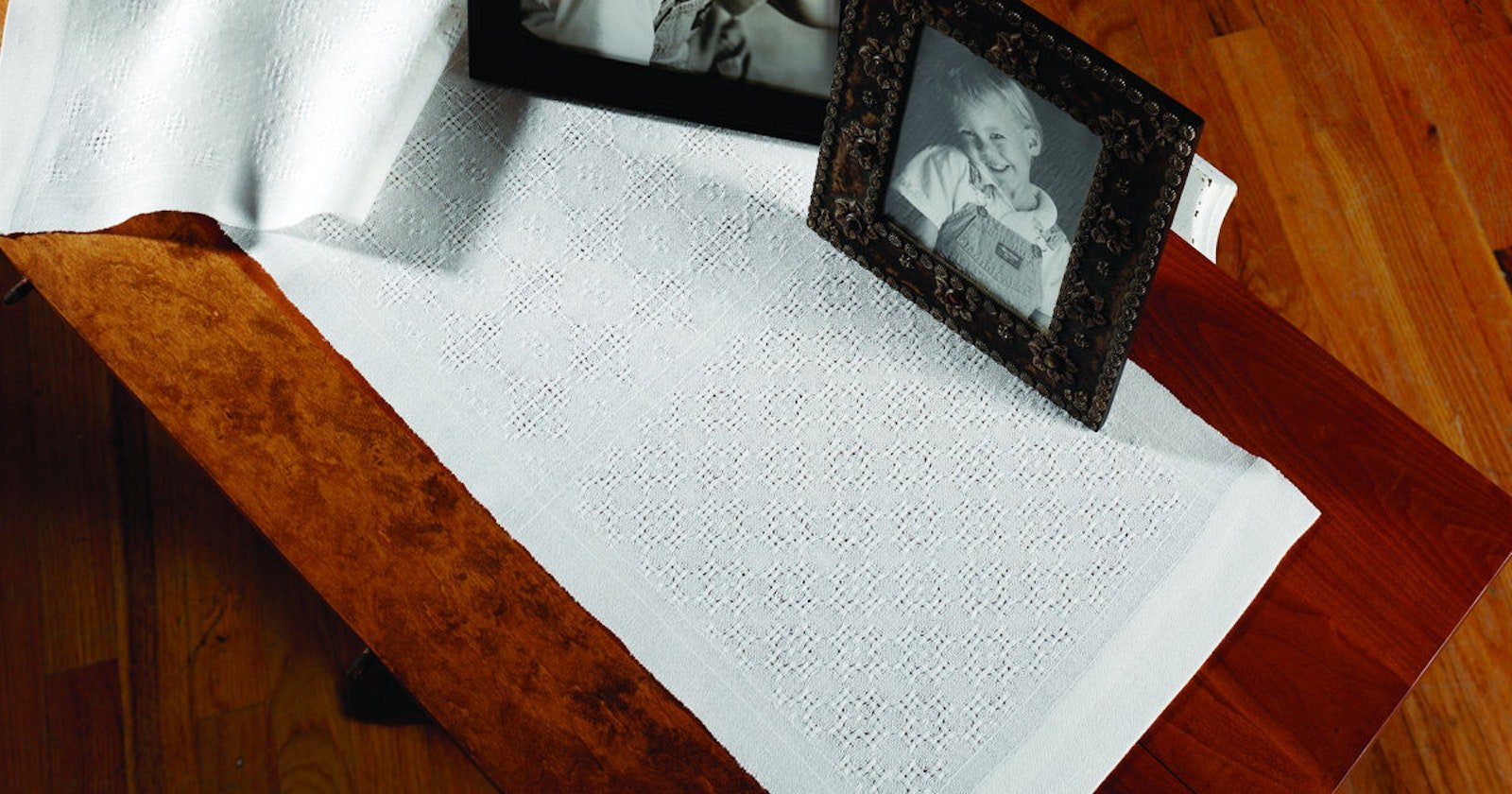Now that we're in summer, my weaving thoughts tend to turn to light and airy laces. As it turns out laces, especially huck lace, are for more than just summer scarves. As Lynn Tedder writes in this article, originally published as the Endnotes of the November/December 2018 issue of Handwoven, huck is a structure for all seasons. —Christina
When I am feeling philosophical, sometimes I like to play “What if?” What if I were marooned on a deserted island with a treadle loom and plenty of yarn, but only allowed one weave structure to use? What would that structure be? Although I’ve considered many structures, I always seem to end up choosing huck because it can be applied to so many different projects and fibers, from heirloom linens through garments and blankets to mosquito netting. (Mosquito netting, you ask? Really? Well, maybe.)
Much of the reason huck is so versatile lies in the fact that it is based on plain weave, with the added benefit that it can make warp and/or weft floats in addition to plain weave. And those floats are almost magical. They increase the surface area of the yarns, which increases absorbency in towels and helps trap warmth in blankets. Once a fabric is off the loom, huck’s floats also allow some of the threads to slip out of plain weave’s perfectly square alignment and form openings in the web for all kinds of lacy effects. To emphasize huck’s texture, which I consider a great part of its charm, I tend to use smooth, plain yarn in almost any fiber, and with not much color. So my deserted island yarns will all be light pastels or neutral colors.
Fourth of July Napkins by Helen Irwin from Best of Handwoven: Huck Lace.
What kind of huck would I weave while alone on my island? On my imaginary island, the climate is temperate and there are four seasons, so I can approach it seasonally. In fall, perhaps I’ll weave some heirloom table linens in real linen: placemats, runners, napkins, even a tablecloth. Certainly, table linens are a classic application (maybe I’ll have some visitors for the holidays), and both four-shaft and eight-shaft huck can make wonderful lacy patterns.
For winter, I could weave a warm thermal throw in wool and festive lacy scarves or shawls in silk embellished with metallic yarns or beads for gift s or to wear at parties. In spring, I’d definitely go to my all-time favorite huck project: towels in cotton or cottolin for dishes or tea, or to use as guest towels. (My imaginary island has become rather popular, it seems.) As an added benefit, towels, especially kitchen towels, make wonderful vehicles for experimenting with new combinations of floats and patterns. Even if the new designs don’t turn out to be completely successful, they will still dry dishes!
Lynn’s draft for myggtjäll.
Summer, of course, is the season to revisit mosquito netting. When I first began weaving huck, I ran across several four-shaft draft s that were labeled myggtjäll in Mary Snyder’s Lace and Lacey Weaves. The drafts consisted of two blocks of three-thread huck woven as huck lace with warp and weft floats (see draft). According to the book, the Swedish word translates to “mosquito netting.” I was fascinated by the idea, although I did wonder how fine a thread and how close a sett it would take to weave a cloth with openings small enough to actually keep mosquitoes out. It turns out the name is probably more symbolic than literal, but it makes a very lacy, transparent cloth that would be perfect for curtains to filter but not block the summer sun. So my myggtjäll project could be some lacy white summer curtains in fine pearl cotton.
As you can see, huck is a weave for all seasons. Not only are the design and project possibilities endless, you don’t even need a deserted island!
—Lynn Tedder
PS: If you love huck make sure you check out our _ *Best of Handwoven: Huck Lace* _where you can find projects by Madelyn van der Hoogt, Tom Knisely, and, of course, Lynn Tedder.



